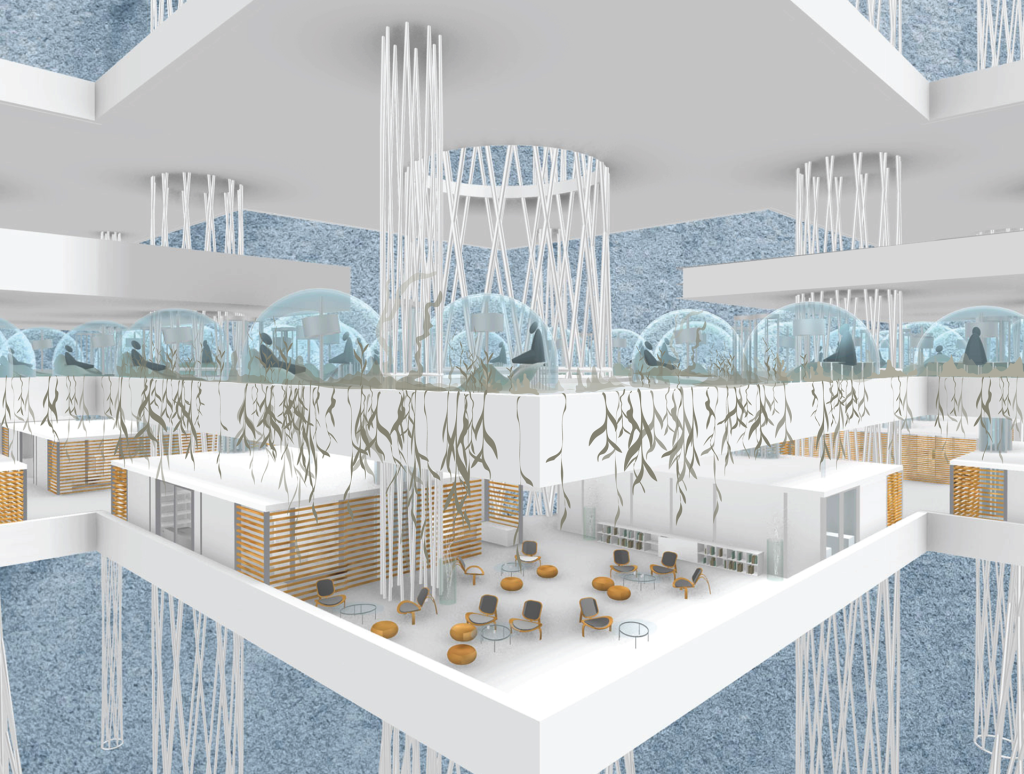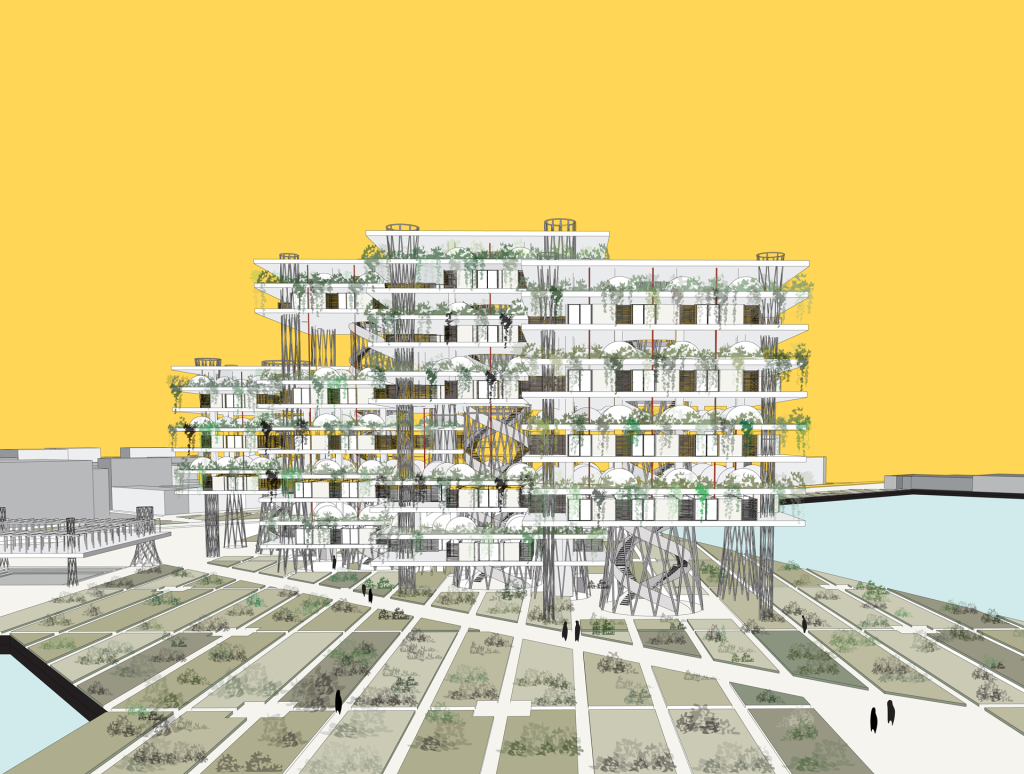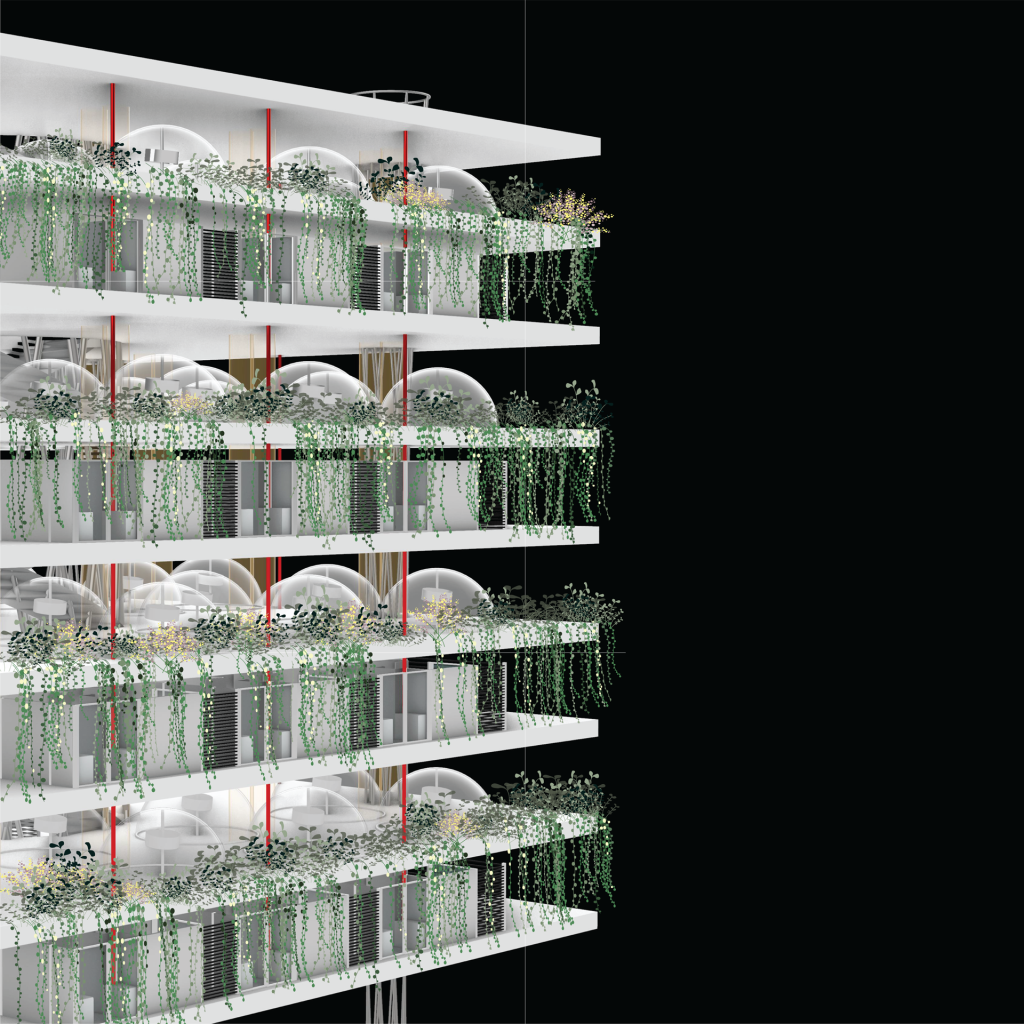ePolykatoikia
Architectural Design 7/9 Studio at the Department of Architecture, University of Patras
Professor: Panos Dragonas
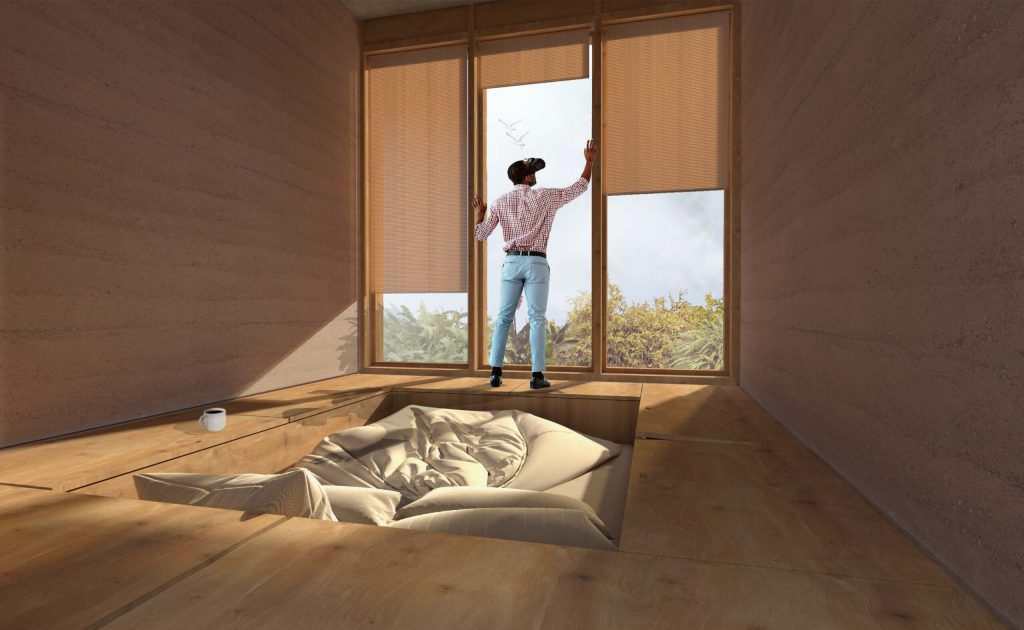
Eirini Alexopoulou (2022-23)
The COVID-19 crisis pushed societies to exploit the applications of digital technologies. It took only a few weeks for a large part of everyday activities to be transferred from urban space to electronic networks. Daily business communication and collaboration, transactions with services, trade in food and consumer goods, but also teaching and education at all levels were rapidly reorganised to be carried out at a distance. Takis Ch. Zenetos had been talking about the coming Electronic urbanism since the 1960s. Many of the ideas and concepts he introduced then – such as tele-education or tele-services – are now a reality. Social networks have already reshaped patterns of social life. The purchase of goods is moving from shopping centres to the Internet. Personal data is now archived and stored in digital form in remote data centres run by large corporations. At the same time, the role of urban infrastructure is being redefined as electronic networks take on a more important role than motorways.
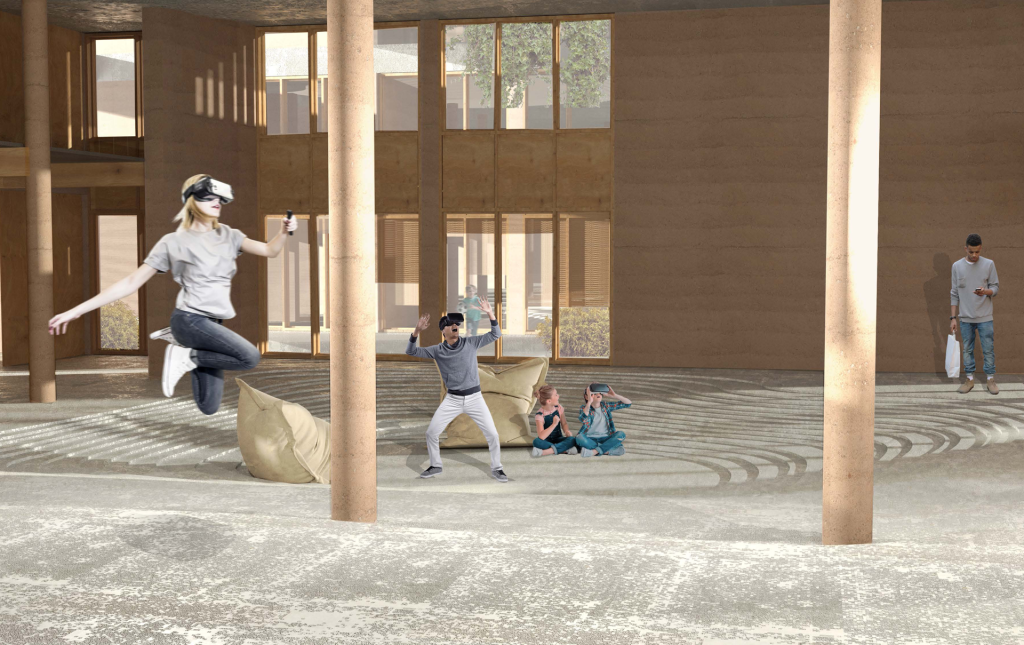
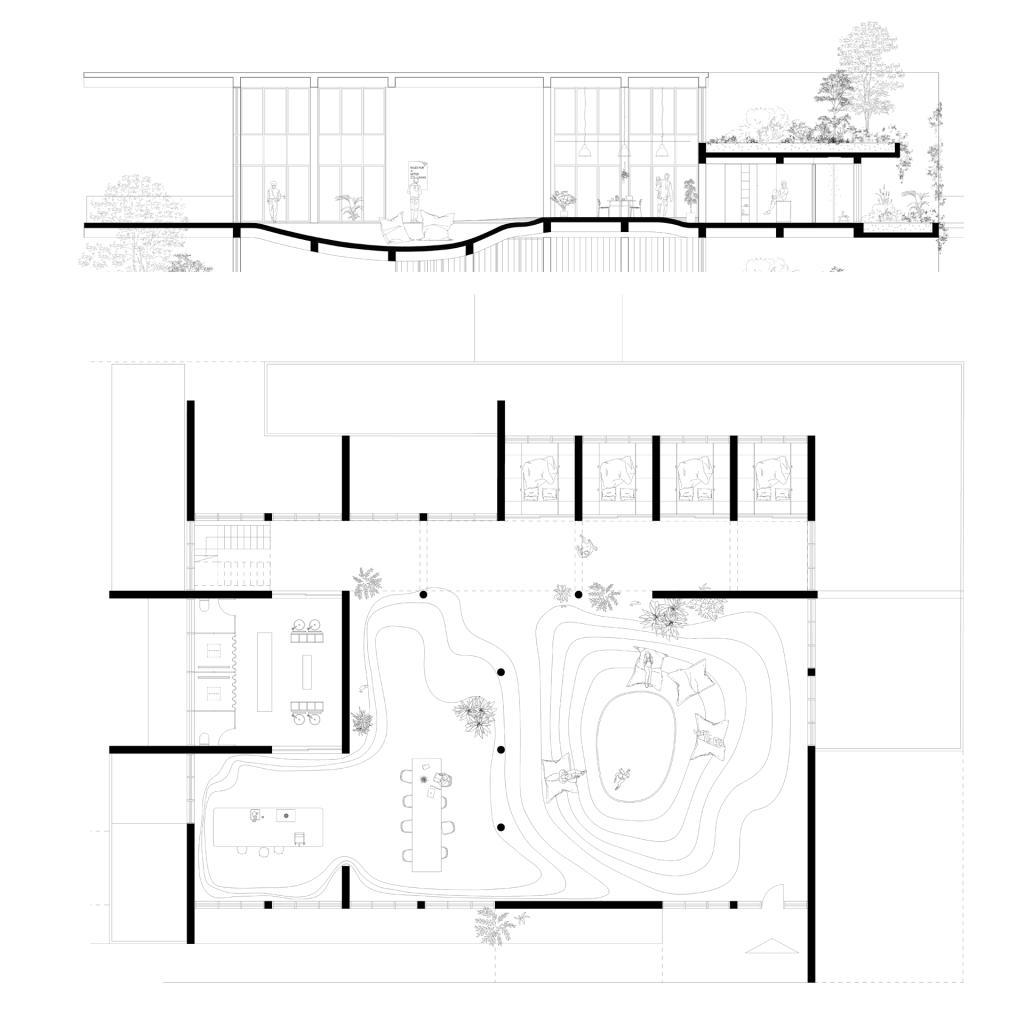
Eirini Alexopoulou (2022-23)
The housing programme is expanding, as for a large part of the population the place of residence is identified with the place of work. The home environment is being enriched with new, more powerful appliances that can be controlled online. The vacuum cleaner vacuums itself. The fridge sends messages when the milk is running low. Lighting is automatically adjusted. The new appliances are controlled by “smart” digital assistants with human voices and – usually – female names. Consumer goods will soon be delivered to homes via drones. The same is likely to happen to the residents themselves. Television will soon give way to 3D projections. The modern home as we know it was invented to incorporate the technologies of the inter-war period (such as the electric cooker, the radio and later the television, etc.) and to provide solutions to the needs of people in the 1930s. Today, these technologies are obsolete, as the functioning of a modern home is controlled by new digital infrastructures and algorithmic systems that are rapidly evolving.

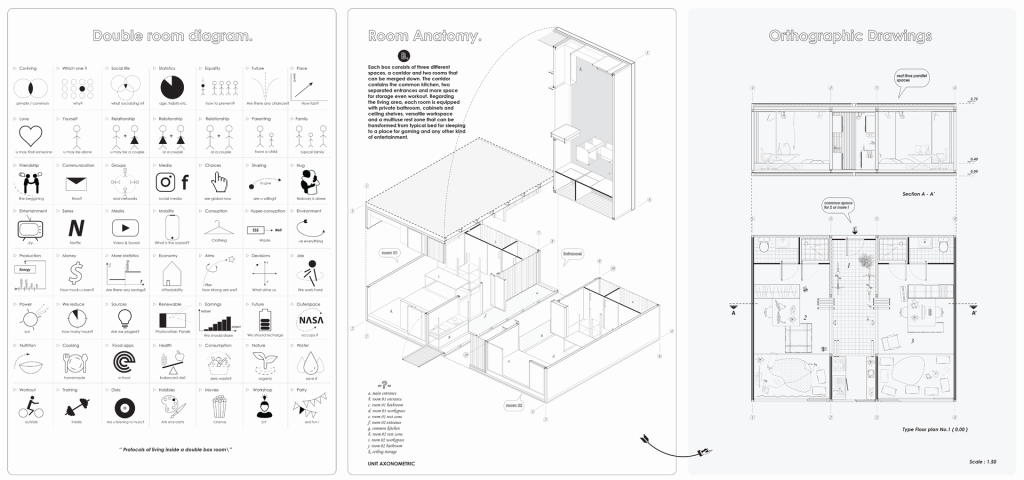
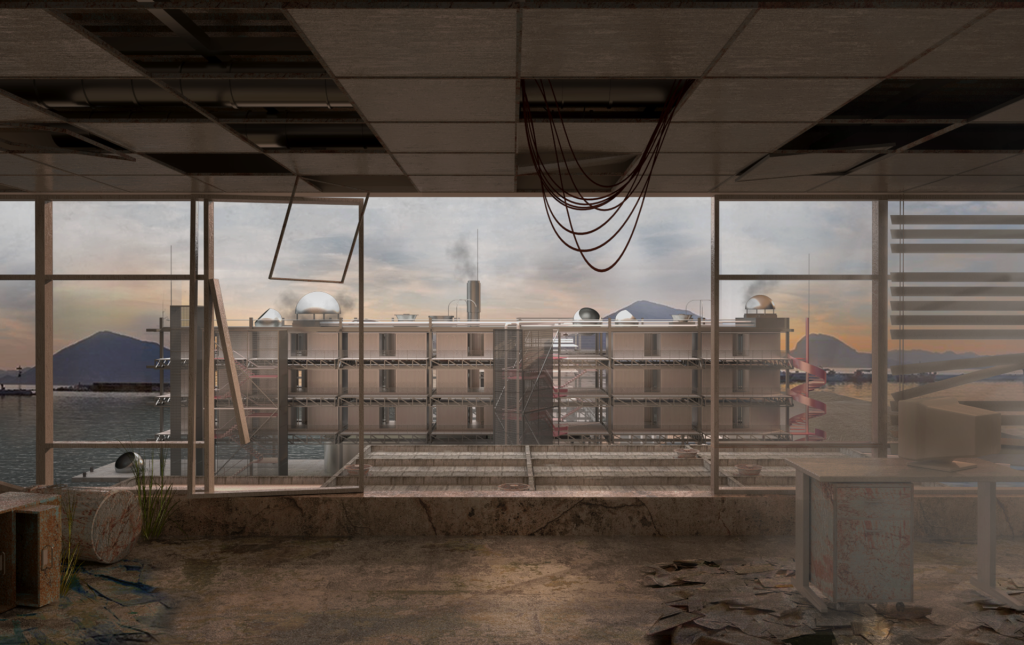
Stelios Raphael Sakellariou, “Living factory” (2020-21)
The workshop explores the possibilities of revising the building type of the Greek apartment building according to the conditions of the post-COVID period. The theme of the semester is the design of a new model residential complex in Patras. The design will take place at different scales, exploring answers to the following questions:
What are the requirements of a modern neighbourhood where 24-hour living is desirable? What collective spaces are needed in a residential complex? How will access to housing be provided in a city that is gradually becoming car-free?
What could be the architecture of the new “smart” apartment buildings that will combine living, working and leisure activities? What are the characteristics of the Greek apartment buildings of the last century that need to be revised? How can new residential buildings shape the public image of the city?
What will the home of the future look like? What are the modern patterns of living and working? What are the new or upcoming appliances that will change the way we live? What is a ‘smart’ home? What is the “Internet of Things” and to what extent can it influence the architecture of the house? What will be the typological characteristics of the new homes? What will be the atmosphere of the 21st century home?
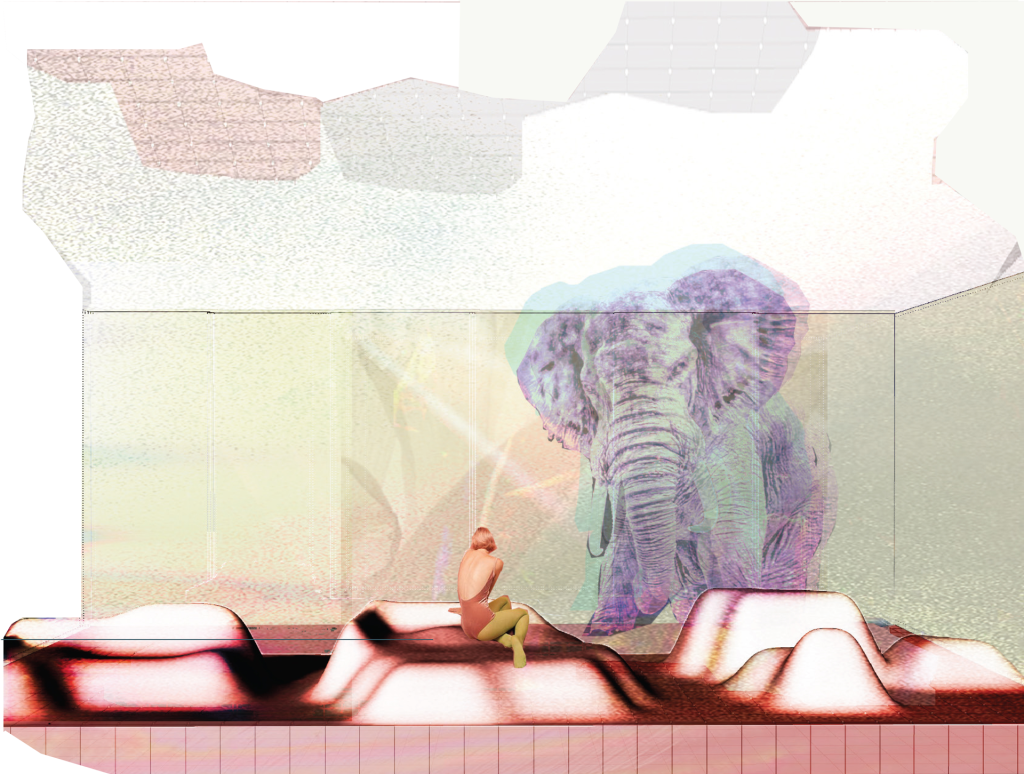
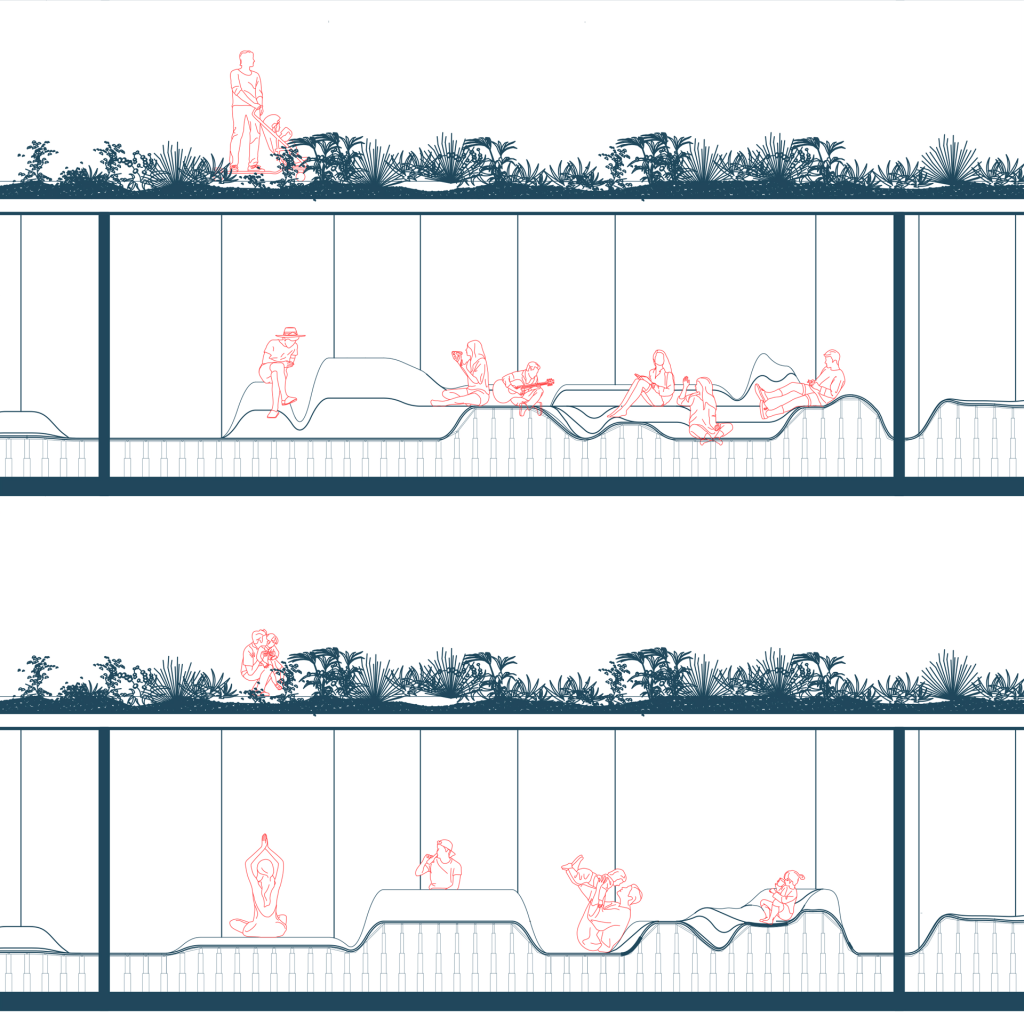
Maria Athanasopoulou & Eirini Sarri (2022-23)
